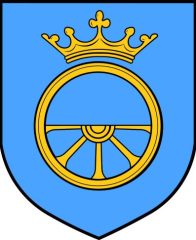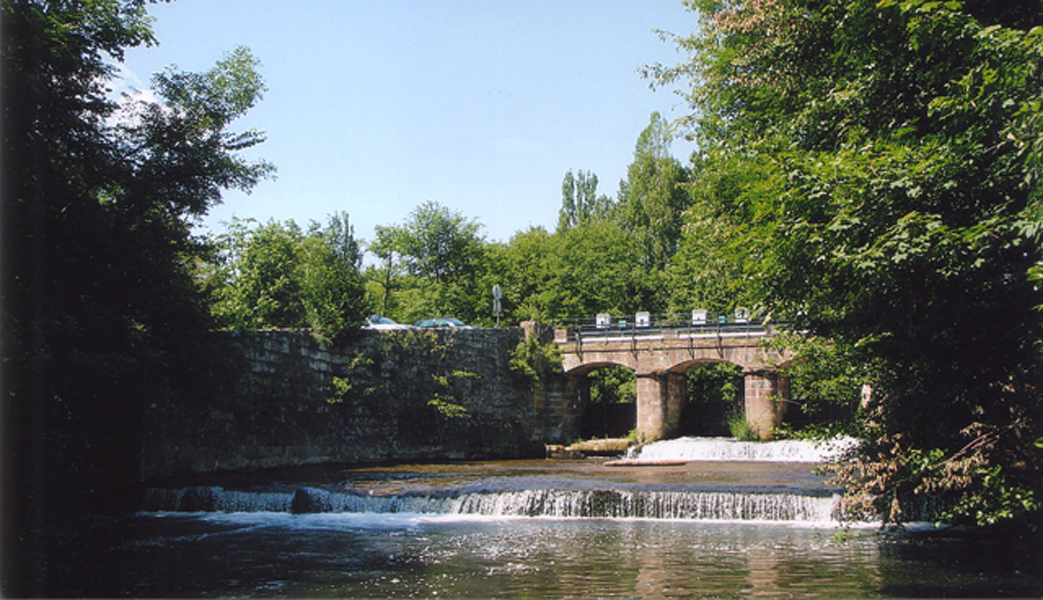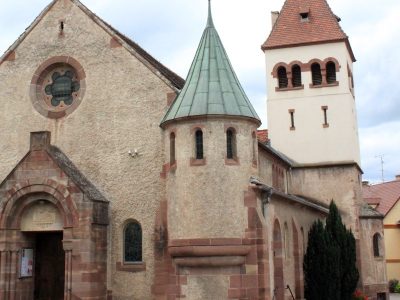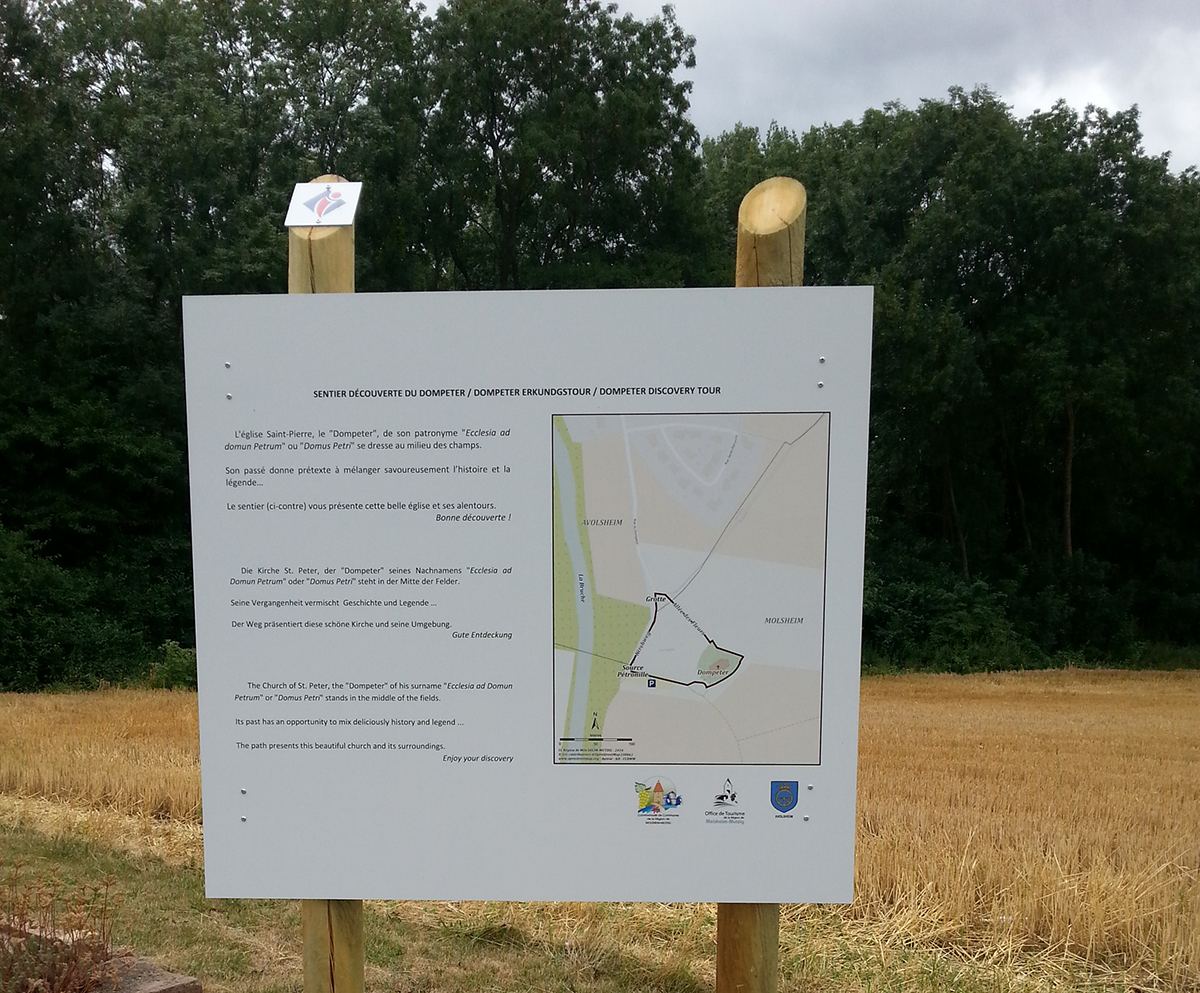
Located on the wine road, 2 kilometres north of Molsheim, the village offers visitors a picturesque setting, with its traditional half-timbered houses, but also exceptional buildings with the Dompeter and the Saint Ulrich Chapel, reputed to be among the oldest churches in Alsace…
Nature lovers can stroll along the banks of the Bruche, contemplate the colony of wild geese that has taken up residence there, or observe the salmon that swim up the fish pass installed next to the sluices.
(source: commune of Avolsheim)
On the heritage side

The Avolsheim dam, also known as the “small and large valves”, was built in 1682 on the artificial canal of the Bruche built by the architect Vauban.

The Avolsheim chapel is the oldest surviving sanctuary in Alsace from the Carolingian period, as archaeological investigations undertaken in 1967 have made it possible to place the construction of this tetraconical chapel in the 9th century.
It is not open to the public.

The church of St. Peter, the “Dompeter”, from its patronymic “Ecclesia ad domnum Petrum”, or “Domus Petri”, stands in the middle of the fields outside the village.
Legend attributes the building of the Dompeter to Saint Materne, who used to preach at the foot of a lime tree near the fountain and who chose this place to build a church. There are remains of a lime tree in front of the building. This was weakened by the storm of 1999 and subsequently collapsed in 2006.

Church Saint Materne
The neo-Romanesque building consists of a nave with low sides leading to a barrel-vaulted choir with a cul-de-four apse. Above the sacristy, the side bell tower houses 3 bells cast in the second half of the 18th century for the former parish church. On the gallery is an organ from 1867, originally installed by Joseph Stiehr in the Dompeter church and transferred here in 1911.

The spring has been known since the Middle Ages for its beneficial effects on fevers and sterility. Since the 18th century, it has been protected by an aedicule: a small construction made of Vosges sandstone.
The origin of its name comes from a legend saying that Petronilla, spiritual daughter of Peter, joined Saint Materne and his disciples at a crossroads of the Roman roads leading to Altitona (Mont Ste Odile), to Trestabernae (Saverne), to Germania and to Gaul, and that it was not far from there that a beneficial spring was found.

Stroll around the Dompeter
In the meadow in front of the Dompeter church, there is a meandering path lined with dozens of signs, explaining the history of the Dompeter,
Game the magic words
Game for children aged 6 and over to discover villages in the Molsheim-Mutzig Region. With one of 18 game sheets to fill in as a
